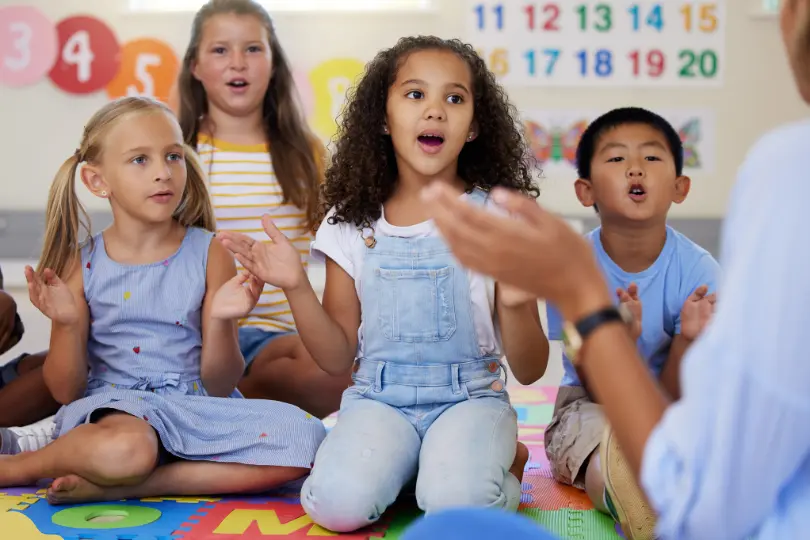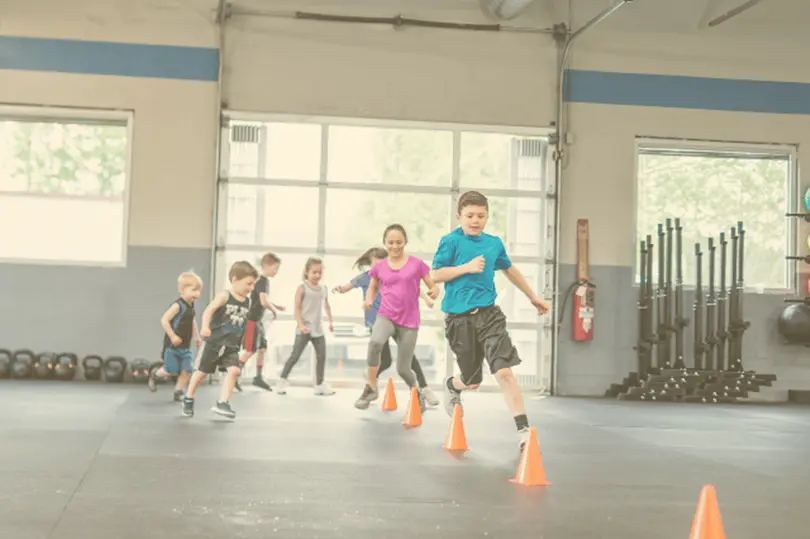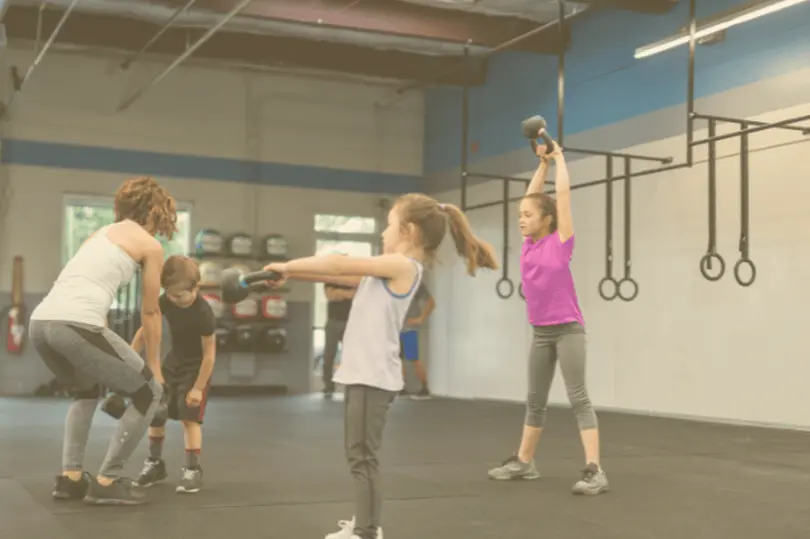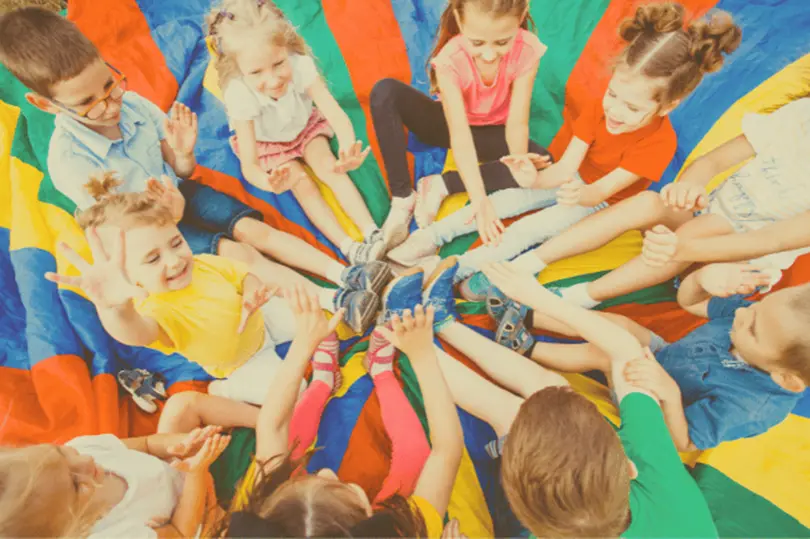
Have you ever watched a child light up excitedly as they build a towering block castle or dance freely to their favorite tune?
These moments aren’t just playful; they’re powerful instances of kinesthetic learning – a learning style where movement and physical activity take center stage. Embracing kinesthetic learning strategies can unlock possibilities for youth development, fostering academic growth, physical well-being, social skills, and emotional intelligence.
So, let’s dive into kinesthetic learning and discover how we can empower young minds through the joy of movement!
The Benefits of Kinesthetic Learning in Child Development
Kinesthetic learning, often referred to as “learning by doing,” offers a range of benefits that go far beyond simply grasping academic concepts. It plays a crucial role in fostering well-rounded development in children, positively impacting their cognitive function, physical health, and social-emotional skills. Let’s explore how movement and hands-on experiences can unlock a child’s full potential.
Enhancing Cognitive Function
Movement is deeply intertwined with cognitive processes. Engaging in kinesthetic learning activities stimulates neural pathways in the brain, improving memory, focus, and problem-solving abilities. For instance, building with blocks requires spatial reasoning and planning, while acting out a historical event can enhance understanding and recall of critical details. These experiences contribute to developing executive functions, which are essential for success in academics and beyond.
Improving Physical Health
Active learning is not only good for the brain; it’s also vital for maintaining physical health. Kinesthetic activities promote cardiovascular fitness, coordination, and motor skills development. Whether dancing, playing sports, or participating in hands-on science experiments, movement helps children develop healthy habits and a positive relationship with their bodies. This, in turn, can contribute to improved self-esteem and overall well-being.
Fostering Social and Emotional Skills
The benefits of kinesthetic learning also extend to social and emotional skills. Collaborative activities like group projects or team sports provide opportunities for children to learn teamwork, communication, and conflict-resolution skills. Through these experiences, they develop empathy, build relationships, and learn to navigate social situations effectively. Kinesthetic learning also empowers children to express themselves creatively and build confidence in their abilities.
Read also: 6 Signs Your Child Is Struggling With Mental Health, Not Lazy
Kinesthetic Learning Strategies in Educational Settings

Kinesthetic learning involves physical activities integrated into classrooms, outdoor areas, and virtual settings. These activities require movement and engagement, including role-playing, simulations, experiments, and games. Educators can use these strategies to create dynamic and interactive learning experiences for all students.
Classroom Strategies
Examples of Kinesthetic Activities for Learning
Let’s dive into some specific examples of how to incorporate kinesthetic learning strategies into classroom activities:
- Role-playing and simulations: Students can actively engage in historical reenactments, scientific experiments, or even mock trials. These activities encourage them to embody different roles and perspectives, deepening their understanding of the subject matter.
- Building models and manipulatives: Hands-on activities, such as constructing geometric shapes, assembling anatomical models, or creating miniature ecosystems, provide a tangible way for students to grasp abstract concepts.
- Movement breaks and energizers: Incorporating short bursts of physical activity throughout the day can help students refocus their energy and improve concentration. Activities like stretching, jumping jacks, or dancing can enhance engagement.
- Games and puzzles: Educational games and puzzles offer a fun and interactive way for students to develop problem-solving skills, critical thinking, and collaboration.
Tips for Teachers on Implementing Kinesthetic Learning
Now that we’ve explored some activity examples, here are a few tips for teachers on how to effectively implement kinesthetic teaching strategies:
- Variety is vital: Offer a diverse range of activities that cater to different learning styles and interests.
- Flexibility is essential: Allow students to move around and explore the learning environment as needed.
- Collaboration is encouraged: Design activities that promote teamwork and communication among students.
- Assessment should be ongoing: Observe students’ progress and provide feedback to ensure they grasp the concepts.
Outdoor and Play-Based Learning
Stepping outside the traditional classroom walls opens up a new world of kinesthetic learning strategies. Outdoor and play-based learning environments provide unique opportunities for children to explore, experiment, and meaningfully engage with their surroundings. Activities such as nature walks, scavenger hunts, obstacle courses, and gardening can stimulate a child’s curiosity while promoting physical activity and problem-solving skills.
Case Studies and Evidence Supporting Kinesthetic Learning

The effectiveness of kinesthetic learning strategies is not just theoretical; numerous success stories and a growing body of research back it. From individual classrooms to entire school systems, embracing movement in education has yielded impressive results. Let’s explore some compelling examples and delve into the research that supports this approach.
Success Stories from Schools
Several schools have implemented kinesthetic learning programs and witnessed remarkable improvements in student engagement, academic performance, and overall well-being.
- Naperville Central High School in Illinois integrated movement into various subjects, including math and science. Students participated in activities like using their bodies to represent geometric shapes or acting out scientific processes. As a result, the school saw significant increases in test scores and student participation.
- The Forest School in Wales utilizes an outdoor learning environment where students spend a significant portion of their day engaged in physical activities and hands-on exploration. This approach has improved physical fitness, increased self-confidence, and deepened connection to nature among students.
These examples demonstrate the power of incorporating kinesthetic learning strategies into various educational settings.
Research Findings
A substantial body of research supports the benefits of kinesthetic learning. Studies have shown that movement can enhance cognitive function, memory, and attention span.
- A study published in the Journal of Educational Psychology found that students who participated in kinesthetic activities during math lessons demonstrated better understanding and retention of concepts than those who learned through traditional methods.
- Research from the University of Illinois indicates that physical activity can increase blood flow to the brain, improving cognitive performance and focus.
The evidence is clear: incorporating movement into learning can profoundly impact student success and development.
Implementing Kinesthetic Learning at Home

So, we’ve explored the magic of kinesthetic learning in classrooms and schools, but what about bringing this dynamic approach into our homes? Parents and caregivers have a remarkable opportunity to nurture their children’s growth through movement-based learning experiences. Let’s dive into some practical strategies and tips for creating an engaging learning environment right at home.
Activities for Parents
The beauty of kinesthetic learning is that it can be woven into everyday activities. It’s not about structured lessons but about making learning a fun and interactive experience. Here are a few ideas to get you started:
- Cooking Up a Storm: The kitchen is a fantastic learning lab! Involve your child in measuring ingredients, kneading dough, or stirring mixtures. Without realizing it, they’ll develop math, fine motor, and even knowledge of topics like chemistry.
- Building Forts and Castles: Grab some blankets, pillows, and chairs, and let your child’s imagination run wild. Building a fort isn’t just playtime; it’s a lesson in spatial reasoning, problem-solving, and engineering.
- Treasure Hunts and Scavenger Hunts: Create a list of clues or items for your child to find around the house or garden. This activity promotes critical thinking, observation skills, and even a bit of exercise as your child runs around searching.
- Gardening Adventures: Planting seeds, watering plants, and watching them grow provide valuable lessons in science, responsibility, and patience. Plus, it gets kids outdoors and connected with nature.
- Arts and Crafts Galore: Engaging in activities like painting, sculpting, or building with blocks allows children to express their creativity while developing fine motor skills and hand-eye coordination.
Creating an Engaging Learning Environment
Remember, the environment is crucial in fostering a love for learning. Here are a few tips for kinesthetic learners:
- Designate a “Movement Zone”: Create a space in your home where your child can move freely without restrictions. This could be a playroom, a living room corner, or a backyard.
- Embrace Messy Play: Don’t shy away from activities that involve getting messy. Let your child explore with finger paints, playdough, or even mud pies. Sensory experiences are essential for kinesthetic learners.
- Incorporate Music and Dance: Turn on some tunes and encourage your child to move their body. Dancing is a fantastic way to learn rhythm, coordination, and self-expression.
- Utilize Technology Wisely: Many educational apps and games incorporate movement and interaction. Just remember to balance screen time with other physical activities.
By incorporating these tips and activities into your daily routine, you’ll be amazed at how your child thrives through kinesthetic learning. Remember, “Universal design principles can help financial institutions design courses and resources accessible and inclusive for all learners, including those with neurodiverse conditions.” This idea translates beautifully to the home environment as well. Creating a space that caters to various learning styles sets your child up for success and a lifelong love of learning.
Conclusion
The evidence overwhelmingly demonstrates that incorporating kinesthetic learning strategies into educational practices and home environments offers numerous benefits for youth development. By engaging in physical activity and hands-on experiences, children can enhance their cognitive abilities, improve their physical health, and develop essential social-emotional skills. This holistic approach to learning fosters academic success and empowers children to become well-rounded individuals capable of navigating the challenges and opportunities of the 21st century.
As educators and parents, embracing kinesthetic learning strategies is an investment in the future generation. By providing children with opportunities to learn through movement, we can unlock their full potential and create a generation of confident, capable, and resilient individuals. So, let’s encourage children to move, explore, and discover the world through their bodies and minds. The possibilities for growth and development are limitless when we harness the power of movement.
About The Author:
As the founder of Mission Grit, my passion for integrating holistic education models into child development is driven by the remarkable growth I’ve observed in children who engage in our programs. Mission Grit is built on this foundation—creating dynamic, engaging environments where children from K-8 can physically and intellectually develop through activities like obstacle courses paired with lessons in science and finance. We aim to empower the next generation with resilience, leadership skills, and problem-solving capabilities, preparing them for school and life. Our mission is to share these strategies and insights globally, inspiring educators and parents to embrace our active, integrated learning model to foster well-rounded, thriving children.


![[Infographic] Learning More About The Most Common Cancers In Women Common Cancers In Women](https://www.safeandhealthylife.com/wp-content/uploads/2023/10/Common-Cancers-In-Women-1-150x150.webp)

